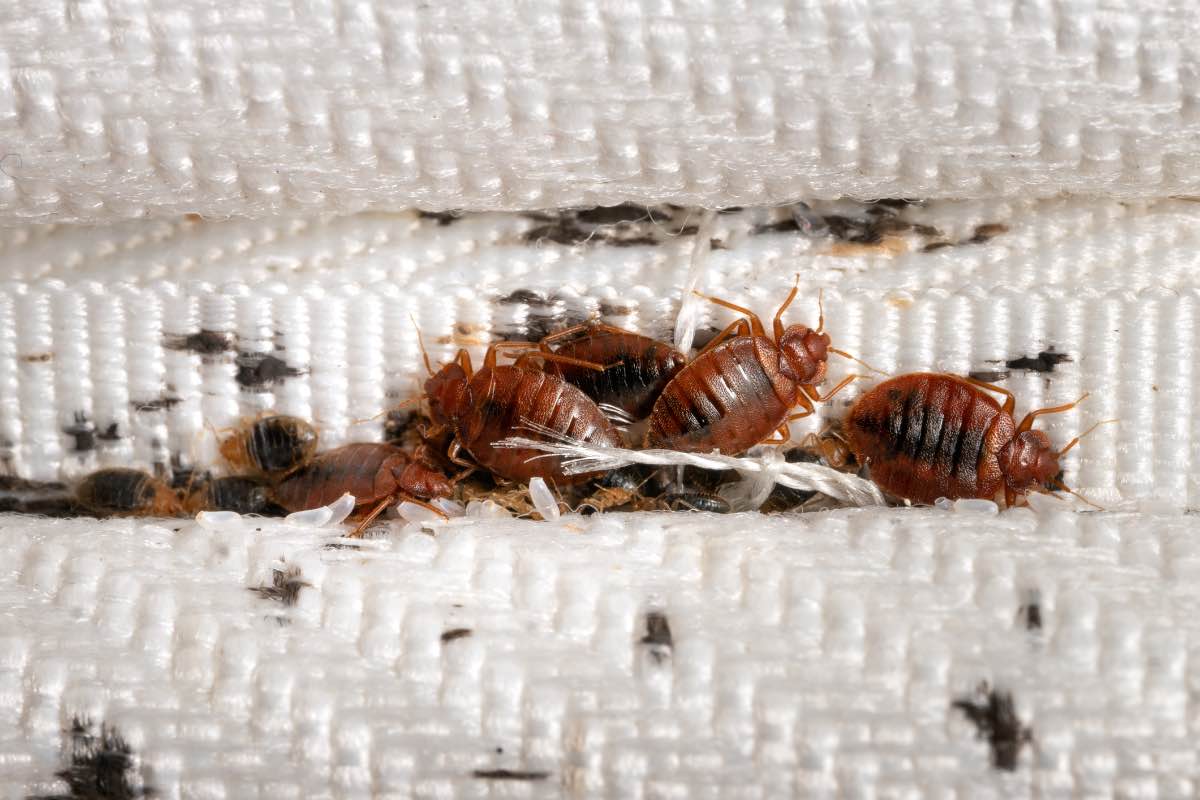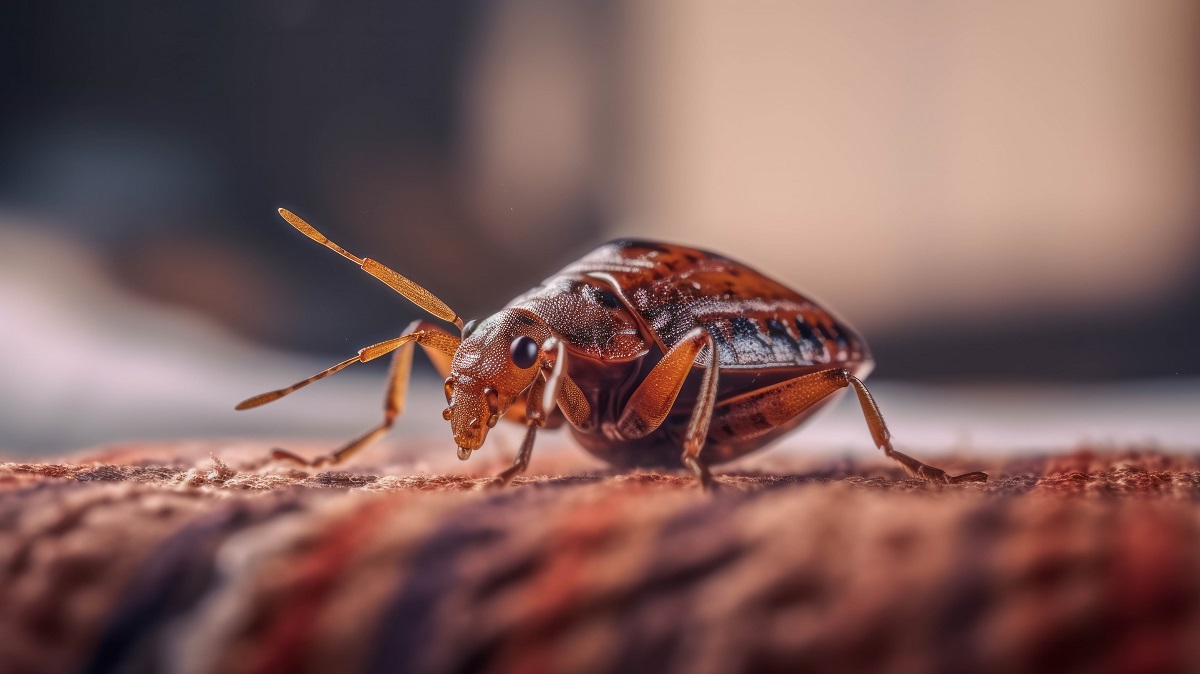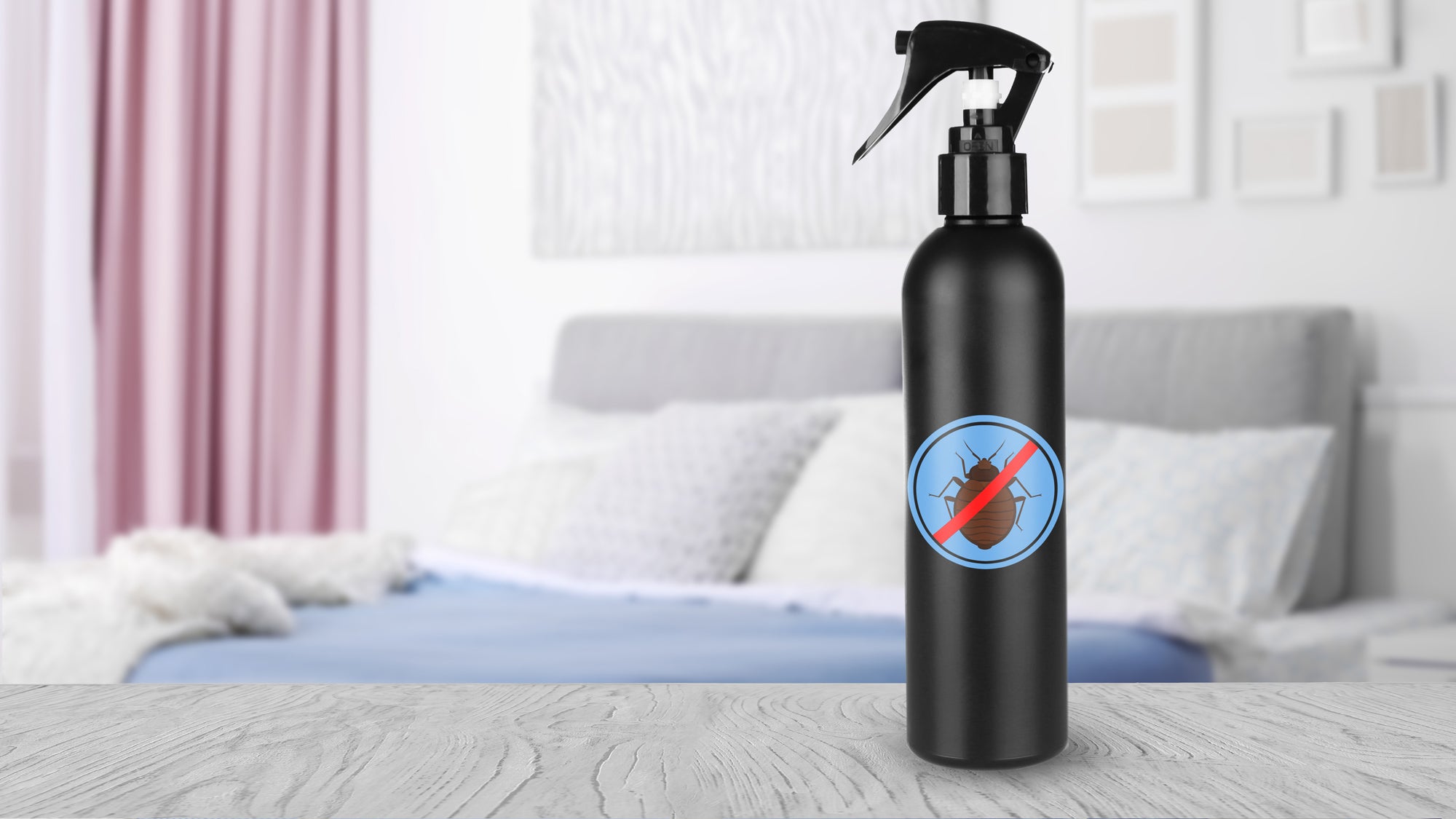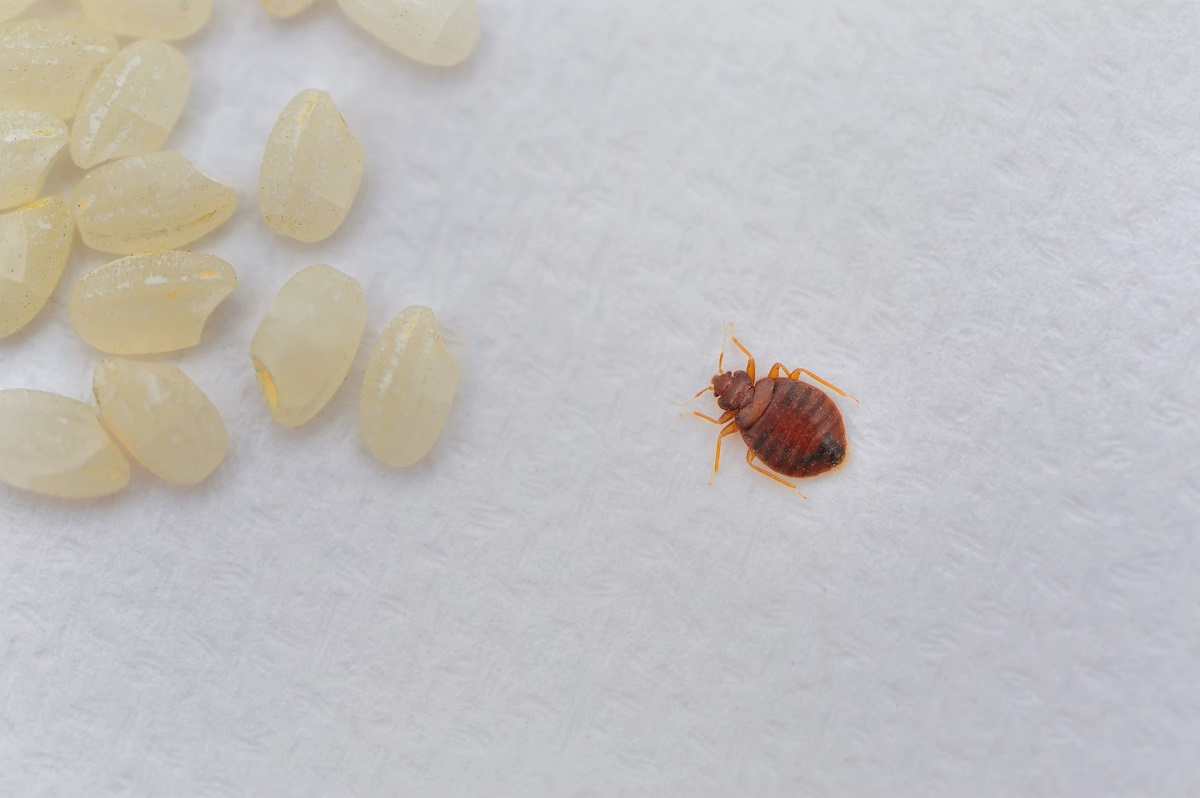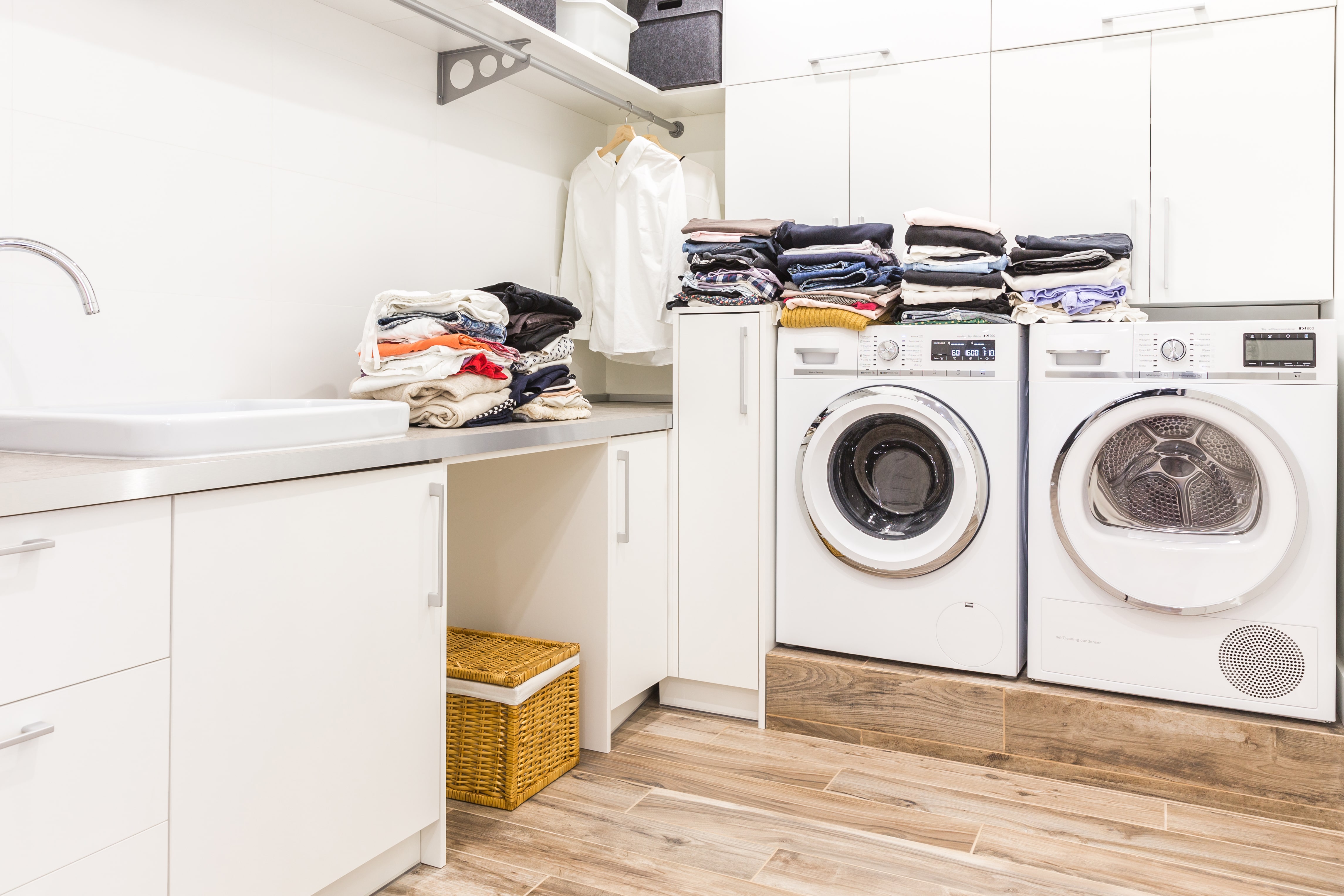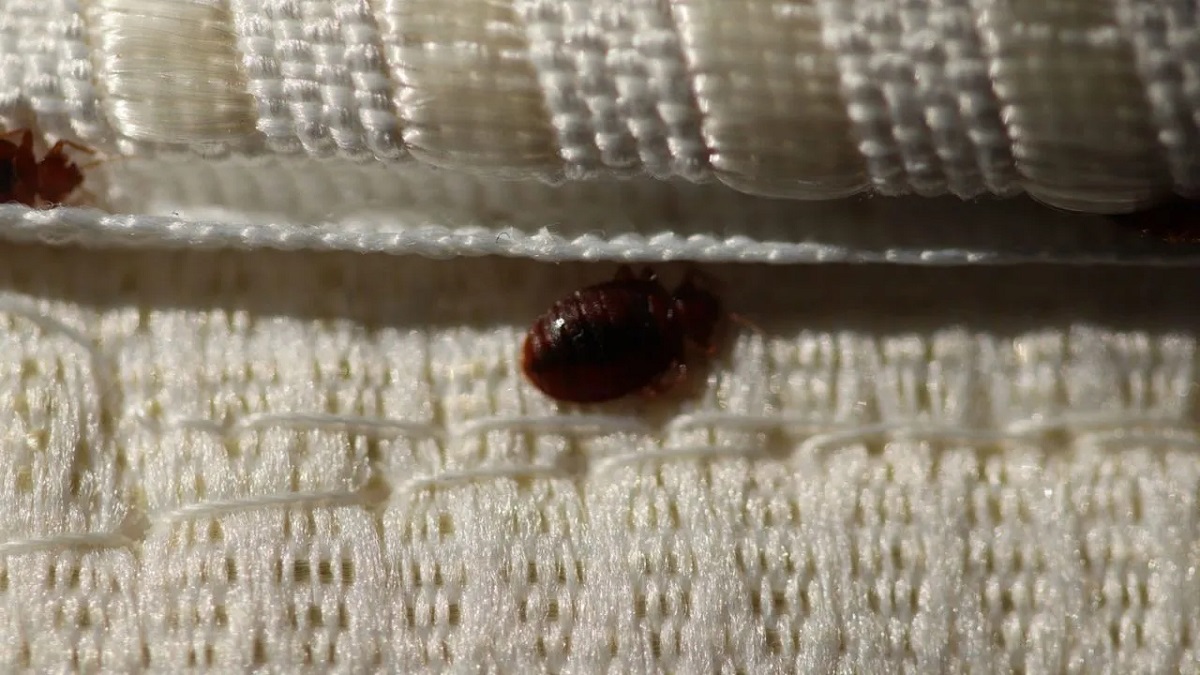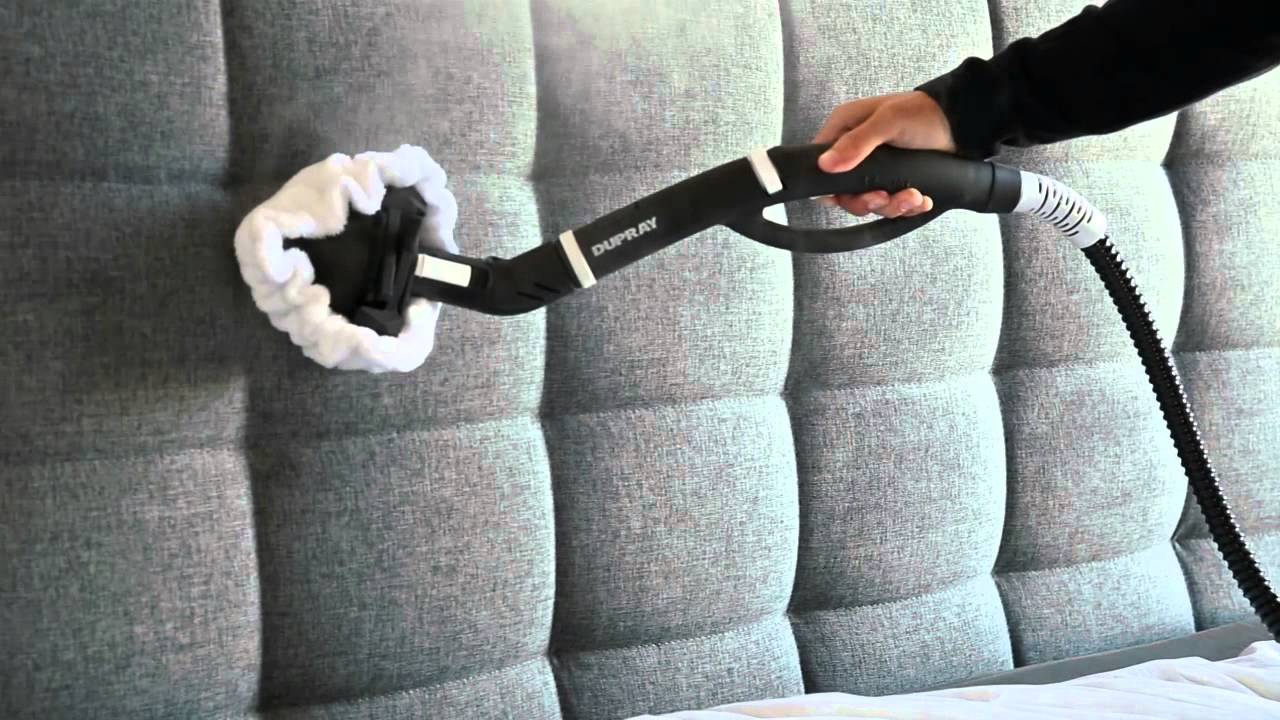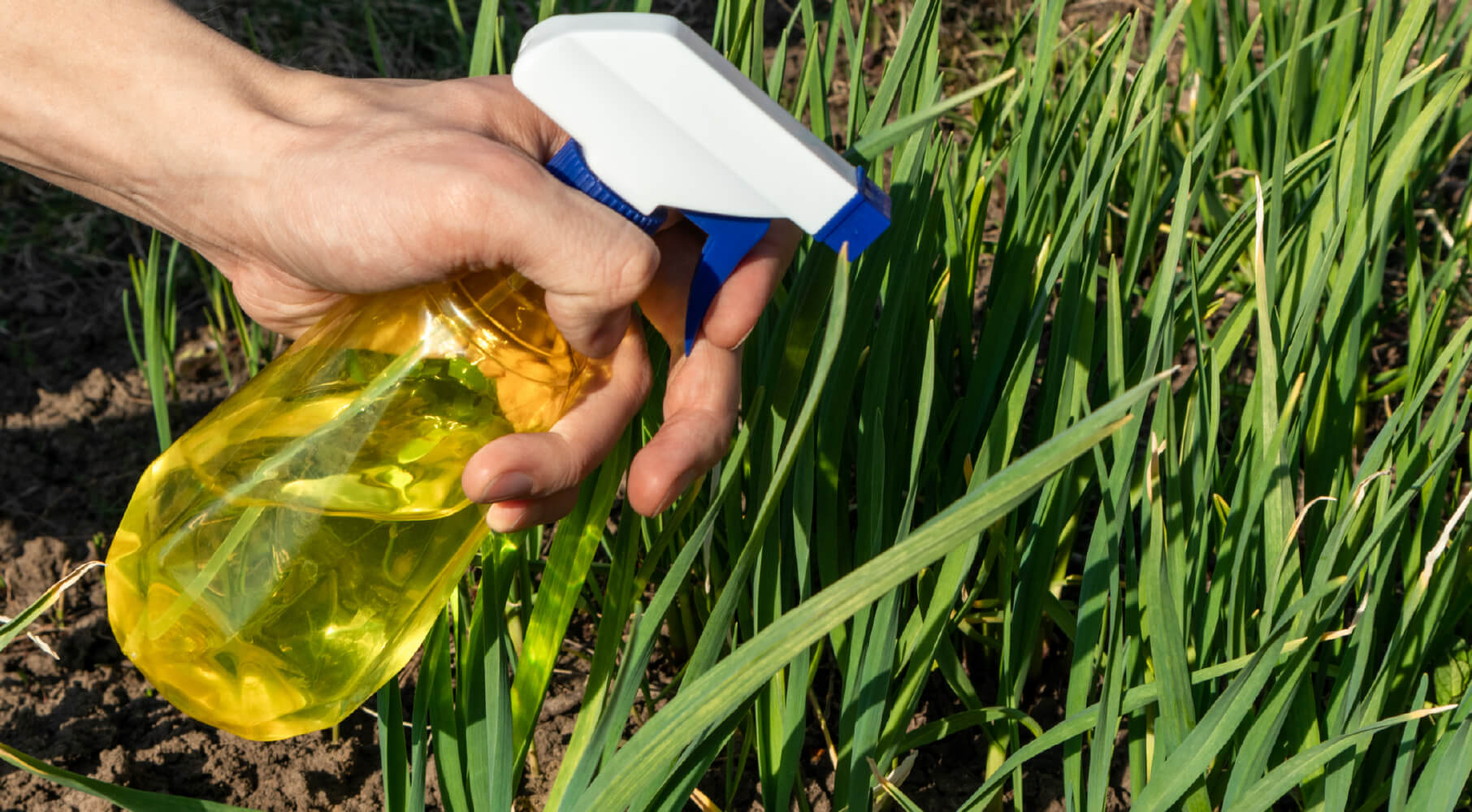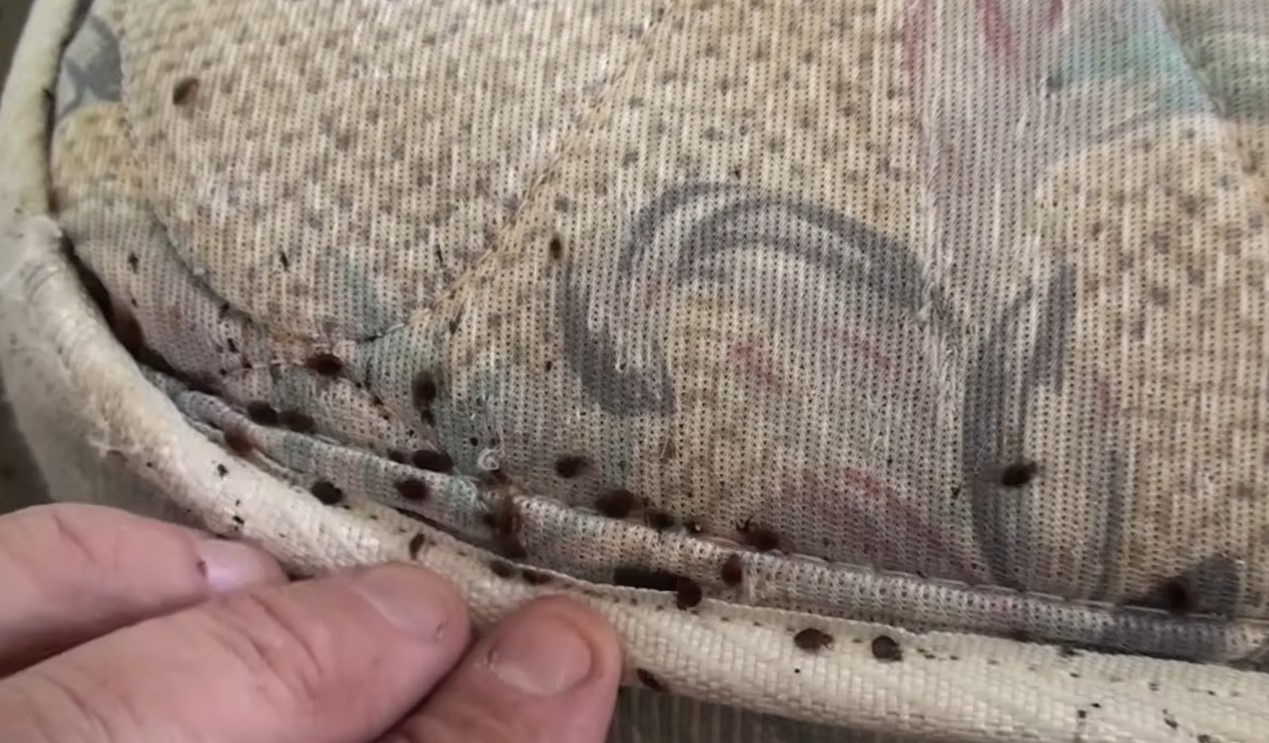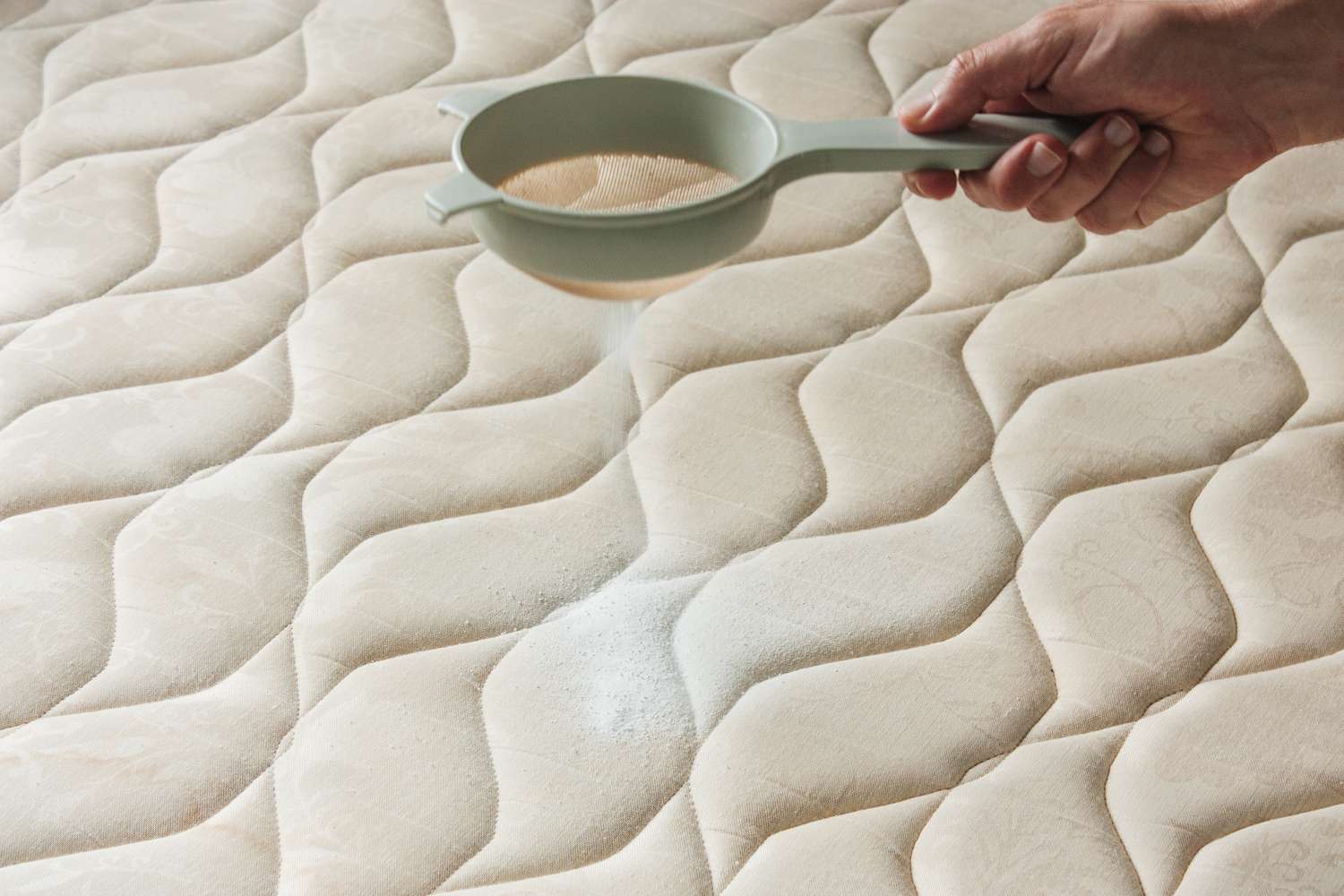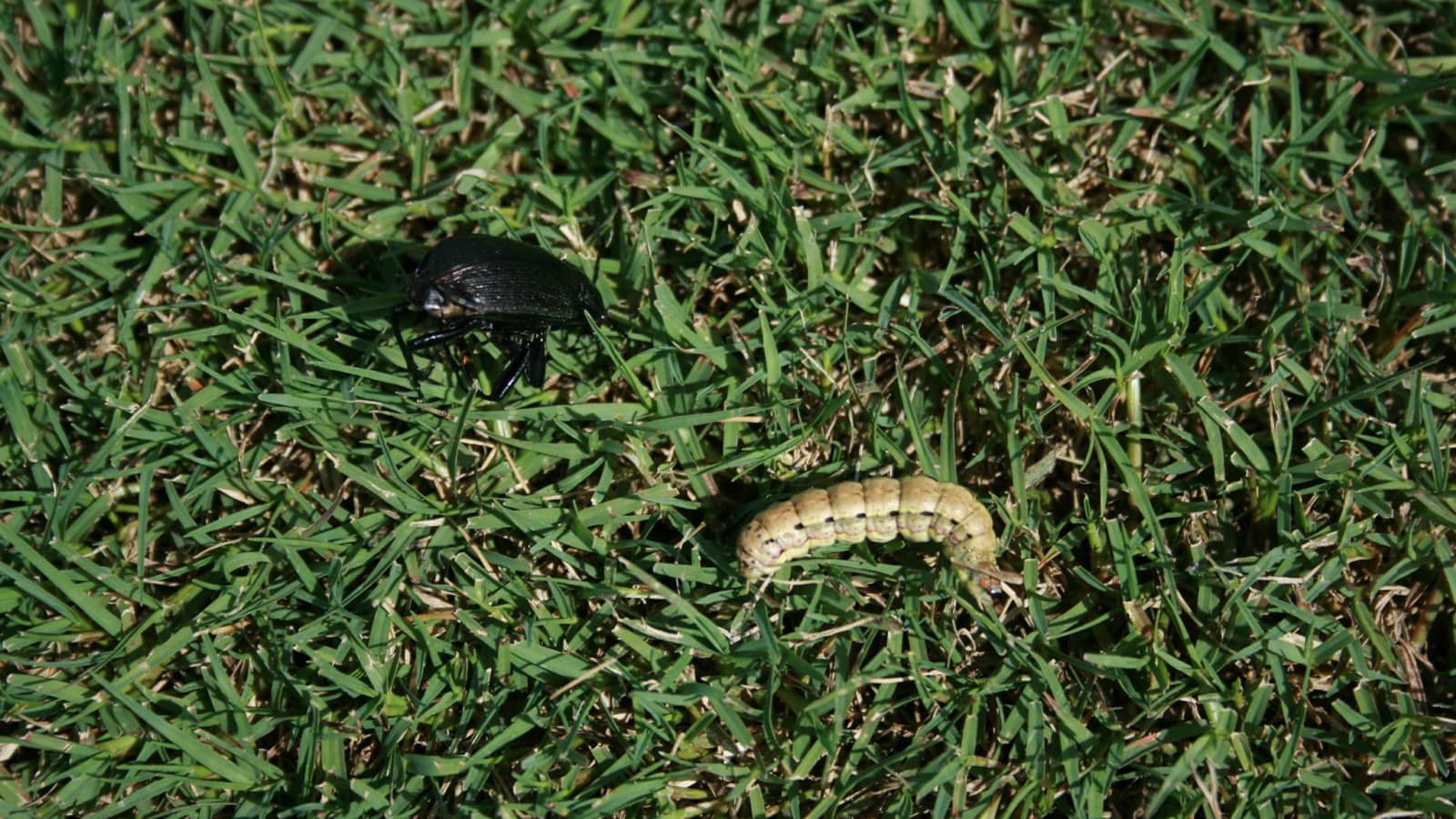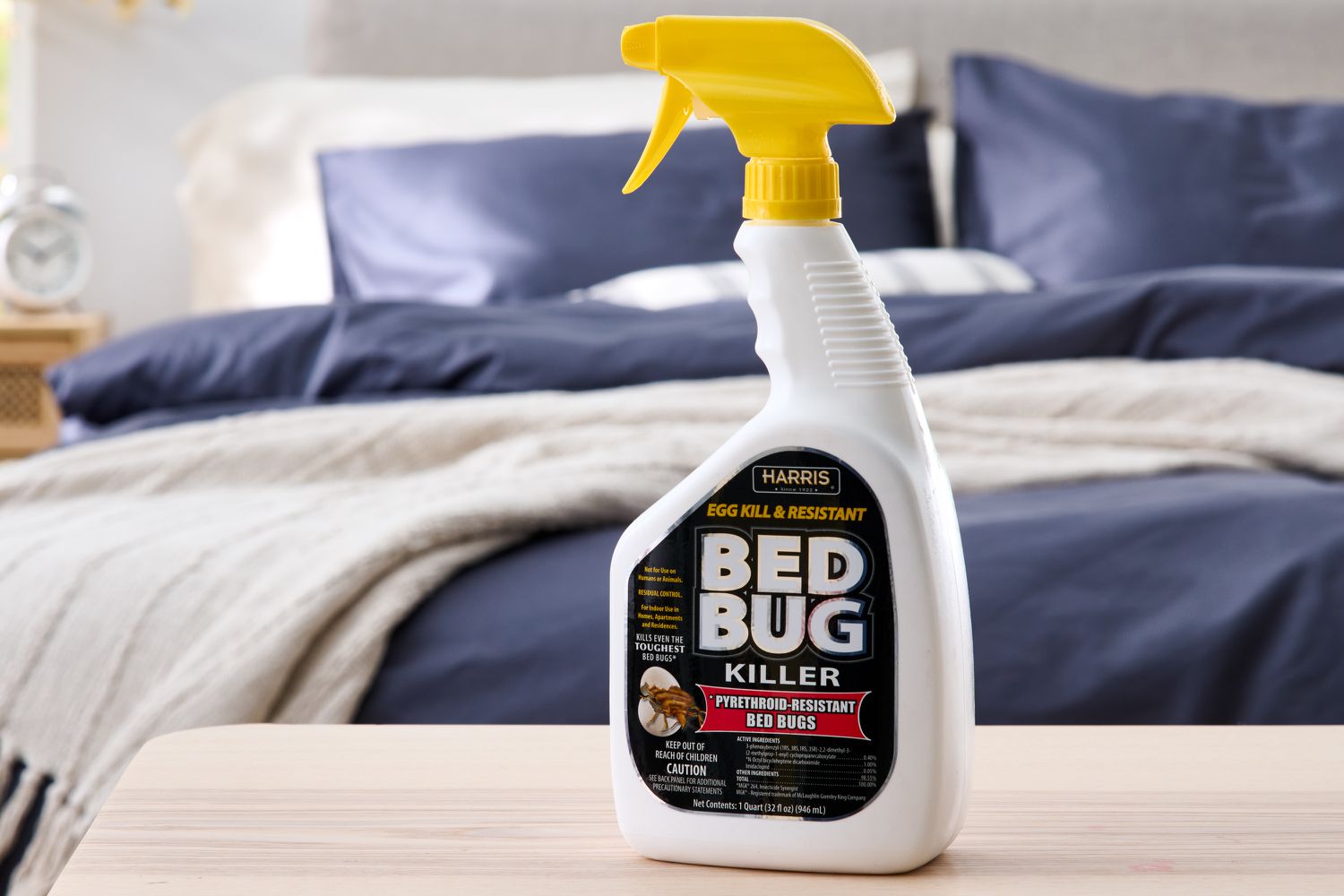Home>Furniture>Bedroom Furniture>How To Use Vinegar To Kill Bed Bugs
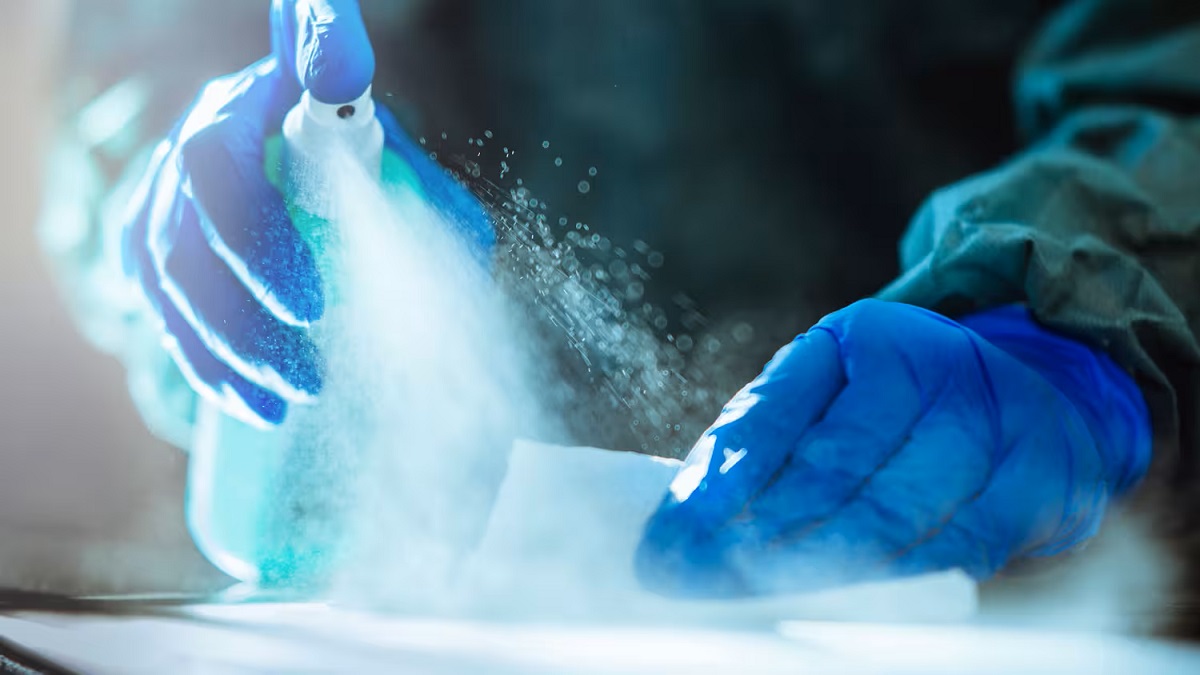

Bedroom Furniture
How To Use Vinegar To Kill Bed Bugs
Modified: October 28, 2024
Learn how to effectively use vinegar to eliminate bed bugs from your bedroom furniture. Safely and naturally eradicate these pesky pests for a peaceful sleep.
(Many of the links in this article redirect to a specific reviewed product. Your purchase of these products through affiliate links helps to generate commission for Storables.com, at no extra cost. Learn more)
Introduction
Welcome to our comprehensive guide on using vinegar to kill bed bugs. Bed bugs are small, pesky insects that infest our homes and disrupt our peaceful sleep. Dealing with a bed bug infestation can be a challenging and frustrating experience. While there are various methods available to combat these unwelcome intruders, vinegar has emerged as a popular and effective solution.
In this article, we will delve into the world of bed bugs, exploring their behavior and the reasons why vinegar can be a potent weapon against them. We will also provide step-by-step instructions on how to prepare your environment, apply vinegar directly to bed bugs, create a vinegar solution for spraying, and treat infested fabrics and furniture using vinegar. Additionally, we will explore other handy vinegar remedies to complement your fight against bed bug infestations. However, it is crucial to note that vinegar can be a powerful substance, and there are important considerations and precautions to keep in mind.
So, let’s jump right in and discover how vinegar can help you wage war against bed bugs and reclaim the sanctuary of your bedroom.
Key Takeaways:
- Vinegar is a versatile and effective natural pesticide for killing bed bugs due to its high acidity, contact killing properties, and ability to disrupt bed bug pheromone trails.
- When using vinegar to combat bed bugs, it’s important to prepare the environment, apply vinegar directly to bed bugs, create a vinegar solution for spraying, and treat infested fabrics and furniture. Remember to consider important precautions and combine vinegar with other control methods for best results.
Read more: How To Kill A Bed Bug
Understanding Bed Bugs
Before we delve into the specifics of using vinegar to combat bed bugs, it is essential to understand the enemy we are facing. Bed bugs are small, oval-shaped insects that feed on human and animal blood. They are nocturnal creatures, primarily active at night when we are most vulnerable in our sleep.
These tiny pests can be found in cracks and crevices near the sleeping areas, such as mattress seams, bed frames, headboards, and even behind wallpaper or electrical outlets. They can easily hitch a ride into your home through infested luggage, clothing, or used furniture.
Bed bug bites can cause itching, redness, and swelling, leading to sleepless nights and discomfort. While they are not known to transmit diseases, their presence can have a significant impact on your quality of life and peace of mind.
Identifying a bed bug infestation can be challenging, as they are skilled at hiding and have a preference for dark, secluded areas. Look out for signs such as small reddish-brown spots on your bedding, molted bed bug skins, or a sweet, musty odor in the room.
Now that we have a basic understanding of bed bugs and their behavior, let’s explore why vinegar can be an effective tool in tackling this nuisance.
Why Vinegar is Effective Against Bed Bugs
Vinegar is a versatile household ingredient that is commonly used for cooking, cleaning, and various home remedies. It is also a potent natural pesticide that can effectively eliminate bed bugs. Here’s why vinegar is an excellent choice for combating these pests:
- Acetic Acid: Vinegar contains acetic acid, which is known for its antimicrobial and insecticidal properties. The high acidity levels in vinegar can disrupt the cellular structure and metabolism of bed bugs, eventually leading to their demise.
- Contact Killing: When vinegar comes into direct contact with bed bugs, it can cause damage to their exoskeletons and internal organs, resulting in their death. This makes vinegar an efficient solution for eliminating bed bugs on surfaces or directly targeting them.
- Disrupts Pheromone Trails: Bed bugs communicate using chemical signals called pheromones. These pheromones help them navigate and locate food sources. Vinegar can disrupt these pheromone trails, making it difficult for bed bugs to find their way to their hosts and breeding grounds.
- Non-Toxic and Environmentally Friendly: Unlike chemical pesticides, vinegar is a natural and environmentally friendly solution. It is non-toxic to humans and pets when used in appropriate quantities, making it a safer alternative for treating bed bug infestations.
While vinegar can be an effective weapon against bed bugs, it is important to note that it may not completely eradicate a severe infestation. In such cases, it is advisable to consult with a professional pest control service to implement comprehensive measures.
Now that we understand why vinegar is an effective tool in the battle against bed bugs, let’s move on to the practical steps of using vinegar to eliminate these pests from your home.
Preparing Your Environment
Before you start using vinegar to tackle bed bugs, it is important to prepare your environment to maximize the effectiveness of the treatment. Here are some crucial steps to follow:
- Declutter: Begin by decluttering your bedroom and other affected areas. Remove any unnecessary items, such as piles of clothes, books, or cluttered furniture. Clutter provides hiding spots for bed bugs, making it harder to target them with vinegar.
- Wash and Dry Bedding: Strip your bed of all bedding, including sheets, pillowcases, mattress covers, and blankets. Launder them on the highest possible heat setting and dry them on high heat as well. The heat will help eliminate any bed bugs or eggs lurking in the fabric.
- Vacuum Thoroughly: Vacuum all surfaces, including your mattress, bed frame, headboard, baseboards, and carpets. Pay close attention to crevices and seams where bed bugs may be hiding. After vacuuming, seal the vacuum bag in a plastic bag and dispose of it outside your home to prevent any potential re-infestation.
- Seal Cracks and Crevices: Use caulk or sealant to fill in any cracks or gaps in walls, floors, or furniture. Bed bugs can hide in these tiny spaces, so sealing them off will help restrict their movement and make it easier to control the infestation.
- Isolate Infested Items: If you have any infested items that cannot be laundered, such as stuffed animals or pillows, place them in sealed plastic bags. This will prevent bed bugs from spreading further and make it easier to treat them with vinegar.
By following these preparation steps, you create an environment that is conducive to using vinegar effectively against bed bugs. It sets the stage for a targeted and thorough treatment, increasing the chances of success in eliminating these pests.
Next, we will explore the various methods of applying vinegar directly to bed bugs and their hiding spots.
Applying Vinegar Directly to Bed Bugs
One of the most direct methods of using vinegar against bed bugs is by applying it directly to the pests themselves. Here’s how you can do it:
- Identify Bed Bug Hotspots: Carefully inspect your mattress, bed frame, headboard, and other areas where bed bugs are likely to hide. Look for signs such as live bugs, eggs, or dark stains left behind by their excrement.
- Locate Individual Bed Bugs: Once you’ve identified the hotspots, use a flashlight and magnifying glass to locate the bed bugs themselves. They may be hiding in crevices, seams, or cracks.
- Dip a Cotton Swab or Q-tip in Vinegar: Using a cotton swab or Q-tip, dip it into undiluted white vinegar. Make sure the swab is well-saturated, but not dripping.
- Apply Vinegar to Bed Bugs: Gently dab the vinegar-soaked cotton swab directly onto the bed bugs that you’ve located. Be sure to apply the vinegar to each individual bug, ensuring full coverage.
- Repeat the Process: If you have a significant infestation, continue locating and applying vinegar to each bed bug you come across. This may take some time, but it will help eliminate the pests effectively.
- Dispose of Infested Materials: After applying vinegar to bed bugs, carefully remove and dispose of any infested materials, such as bedsheets or vacuum cleaner bags, in sealed plastic bags. This will prevent bed bugs from spreading further.
Applying vinegar directly to bed bugs helps kill them by disrupting their cellular structure and metabolism. It is a targeted approach that can be particularly effective for tackling individual bugs or small infestations.
However, it is important to note that while vinegar is a potent pesticide, it may not completely eliminate all bed bugs or their eggs. Therefore, combining this direct application method with other vinegar-based treatments can help enhance its effectiveness.
Next, we will explore how to create a vinegar solution for spraying, which can cover larger areas and reach hidden bed bug hiding spots.
Mix equal parts of white vinegar and water in a spray bottle and use it to directly spray and kill bed bugs on contact. Be sure to also wash and dry all bedding and clothing on high heat to eliminate any remaining bed bugs and their eggs.
Read more: How To Kill Bed Bugs On A Mattress
Creating a Vinegar Solution for Spraying
If you’re dealing with a larger bed bug infestation or want to treat broader areas, creating a vinegar solution for spraying is an effective method. Here’s how you can do it:
- Gather the Materials: Start by gathering the necessary materials for creating the vinegar solution. You will need distilled white vinegar, water, a spray bottle, and a measuring cup.
- Mix Vinegar and Water: In a measuring cup, combine equal parts of vinegar and water. For example, if you use one cup of vinegar, mix it with one cup of water. This dilution helps to minimize the strong vinegar smell and prevents any potential damage to surfaces.
- Pour Solution into the Spray Bottle: Carefully pour the vinegar and water mixture into a clean spray bottle. Ensure that the spray bottle has a nozzle that can deliver a fine mist.
- Shake the Spray Bottle Well: Shake the spray bottle vigorously to ensure that the vinegar and water are well-mixed. This will help distribute the solution evenly during the spraying process.
- Test Spray: Before applying the solution to larger areas, do a test spray on a small, inconspicuous area to ensure that it does not cause any damage or discoloration.
- Target Bed Bug Hotspots: Identify the areas where bed bugs are likely to hide, such as seams, cracks, and crevices. Focus on these spots while spraying to ensure direct contact with the pests.
- Spray the Solution Liberally: Spray the vinegar solution liberally on the bed bug hotspots and surrounding areas. Be sure to cover all surfaces and cracks where bed bugs may be hiding.
- Repeat the Process: Repeat the spraying process every few days or as needed until the infestation is under control. Make sure to monitor the area for any signs of bed bug activity and reapply the vinegar solution if necessary.
The vinegar solution for spraying provides a broader coverage area, allowing you to reach hidden bed bug hiding spots and treat larger infested areas. It is an effective method when combined with other vinegar remedies for a comprehensive approach.
Next, we will explore how to use vinegar to treat infested fabrics and furniture, which can be breeding grounds for bed bugs.
Using Vinegar to Treat Infested Fabrics and Furniture
Bed bugs have a knack for finding their way into fabrics and furniture, making them potential breeding grounds for these pesky pests. Fortunately, vinegar can be an effective solution for treating infested fabrics and furniture. Here’s how to do it:
- Identify Infested Items: Start by identifying any fabrics or furniture that are infested with bed bugs. This may include mattresses, bedding, pillows, couches, chairs, or curtains.
- Launder Washable Items: If the infested items are machine washable, such as bedding or curtains, follow the manufacturer’s instructions for washing. Add one cup of vinegar to the normal detergent and wash them on the highest possible heat setting.
- Bag and Isolate Non-Washable Items: For non-washable items like mattresses, pillows, or upholstered furniture, place them inside large plastic bags. Seal the bags tightly and leave them for a few days. The lack of oxygen and the vinegar fumes will help kill the bed bugs.
- Spot Treat Stains: If you notice any stains or spots on fabrics or furniture that are likely caused by bed bugs, you can directly apply vinegar to those areas. Use a clean cloth or sponge soaked in undiluted vinegar and gently blot the stains. Allow the vinegar to sit for a few minutes before wiping it away.
- Vacuum Upholstered Furniture: Use a vacuum cleaner with a brush attachment to thoroughly vacuum all surfaces of upholstered furniture. Pay extra attention to seams, tufts, and crevices where bed bugs might be hiding. Empty the vacuum bag or canister into a sealed plastic bag and dispose of it outside your home.
- Repeat the Treatment: Repeat the vinegar treatment for fabrics and furniture every few days or as needed until the infestation is under control. Continue monitoring the items for any signs of bed bug activity and reapply vinegar if necessary.
Using vinegar to treat infested fabrics and furniture provides a targeted approach to eliminate bed bugs and their eggs. It is a complementary method to the direct application and spraying techniques we’ve discussed earlier.
Remember that while vinegar can be effective, it may not completely eradicate all bed bugs or their eggs. If you have a severe infestation or are unable to control it on your own, it is advisable to seek professional assistance.
Now that we’ve covered using vinegar for treating bed bugs in fabrics and furniture, let’s explore some additional vinegar remedies that can further aid in your battle against these pests.
Additional Vinegar Remedies for Bed Bug Infestations
In addition to using vinegar directly on bed bugs and treating infested fabrics and furniture, there are other vinegar remedies that can help in your battle against bed bug infestations. Here are a few additional methods you can try:
- Add Vinegar to Laundry: When washing your bed sheets, pillowcases, or other washable items, add a cup of vinegar to the laundry cycle. This will help kill any bed bugs or eggs that may be hiding in the fabric.
- Vinegar Steam Treatment: Using a steam cleaner, steam the surfaces of your mattress, bed frame, and furniture to kill bed bugs. Add a small amount of vinegar to the water tank of the steam cleaner for added effectiveness.
- Combine Vinegar with Essential Oils: Mix vinegar with essential oils known for their insect-repellent properties, such as lavender, peppermint, or tea tree oil. Spray this mixture around your bed, furniture, and other infested areas as a natural deterrent for bed bugs.
- Vinegar Scented Traps: Create vinegar-scented traps by placing a shallow dish or bowl filled with vinegar near your bed or areas where bed bugs are prevalent. The strong scent of vinegar will attract the bugs, and they will drown in the solution.
- Use Vinegar as a Cleaning Agent: Regularly clean your bedroom and surrounding areas with a vinegar-based cleaning solution. Wipe down surfaces, vacuum carpets, and mop floors to eliminate any potential hiding spots for bed bugs.
These additional vinegar remedies can supplement the direct application and treatment methods, enhancing your overall bed bug control efforts. However, it’s important to remember that vinegar alone may not be sufficient to eliminate a severe infestation. Consider combining these remedies with other measures, such as professional pest control services, for best results.
Now that we’ve explored various vinegar remedies for bed bug infestations, let’s discuss some important considerations and precautions to keep in mind.
Considerations and Precautions
While vinegar can be an effective tool in combating bed bugs, there are important considerations and precautions to keep in mind during the treatment process. Here are some key points to consider:
- Test Compatibility: Before using vinegar on any surface, fabric, or material, it’s crucial to test its compatibility. Some materials may be sensitive to vinegar and could be damaged or discolored when exposed to it. Perform a small test patch in an inconspicuous area before applying vinegar to larger surfaces.
- Proper Ventilation: When using vinegar, ensure that the area is well-ventilated. Vinegar has a strong smell, and the fumes can be overpowering in enclosed spaces. Open windows or use fans to circulate fresh air during and after treatment.
- Protective Gear: It is advisable to wear gloves and a mask when handling vinegar or applying it to surfaces. This will protect your skin and respiratory system from any potential irritation or allergic reactions.
- Children and Pets: Keep children and pets away from vinegar during the treatment process. While vinegar is non-toxic, ingesting large quantities can still cause discomfort. Additionally, pets may be sensitive to the strong smell of vinegar.
- Combine with Other Methods: While vinegar can be effective, it is often recommended to combine its use with other bed bug control methods. This can include thorough cleaning, vacuuming, laundering, using mattress encasements, and seeking professional pest control assistance for severe infestations.
- Monitor and Retreat: Bed bug infestations can be persistent, and it may take multiple treatments to completely eradicate them. Monitor the treated areas regularly and retreat as necessary. If the infestation persists or worsens, consider consulting a professional pest control service.
These considerations and precautions will help ensure that your use of vinegar against bed bugs is safe and effective. Remember that each situation may vary, and it’s important to assess the severity of the infestation and make informed decisions accordingly.
By following these guidelines and using vinegar as part of a comprehensive approach, you can increase your chances of successfully controlling and eliminating bed bug infestations in your home.
Thank you for reading our comprehensive guide on using vinegar to kill bed bugs. We hope you found this information helpful and wish you success in your battle against these resilient pests.
Frequently Asked Questions about How To Use Vinegar To Kill Bed Bugs
Was this page helpful?
At Storables.com, we guarantee accurate and reliable information. Our content, validated by Expert Board Contributors, is crafted following stringent Editorial Policies. We're committed to providing you with well-researched, expert-backed insights for all your informational needs.
